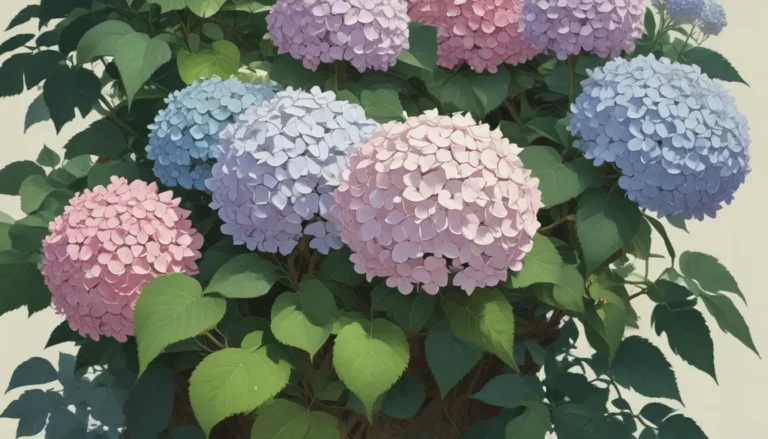The Complete Guide to Growing and Caring for Mountain Alyssum

Have you ever been enamored by the delicate yellow tufts of alyssum cascading down the mountainside? It’s a sight to behold! In this comprehensive guide, we will delve into the vibrant world of mountain alyssum (Alyssum montanum), also known as mountain madwort, native to the alpine landscapes of Europe.
So, if you are passionate about gardening and are looking for a low-maintenance, colorful addition to your garden, keep reading to discover all you need to know about cultivating and nurturing mountain alyssum.
Introduction to Mountain Alyssum
Mountain alyssum, a member of the Brassicaceae family and closely related to broccoli, is a low-growing, perennial herbaceous plant native to the rocky terrains of Europe. Known for its mat-forming growth habit and bright yellow blossoms, this plant thrives in elevations up to 8,000 feet.
Not only is mountain alyssum a visually appealing addition to any garden, but it is also a safe choice for families with kids and pets as it is non-toxic. This plant offers year-round interest with its hairy, green-gray leaves and fragrant yellow flowers that bloom from spring to early summer.
In this guide, we will explore various aspects of growing mountain alyssum, from propagation techniques to managing pests and diseases, along with tips on pruning, maintenance, and cultivars to select.
What You’ll Learn
What Is Mountain Alyssum?
- A perennial ground cover native to Europe
- Belongs to the Brassicaceae family and resembles broccoli
- Ideal for Zones 3 to 9 and thrives in rocky, low-water areas
- Produces small, yellow flowers in clusters during spring and early summer
Propagation Techniques
Mountain alyssum can be propagated from seeds or softwood cuttings. Here’s how you can easily propagate this charming plant in your garden:
From Seed
- Start seeds indoors 6-8 weeks before the last frost date
- Sow seeds in well-draining soil with sufficient light for germination
- Maintain soil moisture and temperature for successful germination
- Transplant seedlings outdoors after the last frost date
From Cuttings
- Take softwood cuttings in early summer with multiple leaves
- Dip cuttings in rooting gel and plant in containers with well-draining soil
- Maintain humidity and light for root development
- Transplant rooted cuttings into the garden once established
Transplanting
- Acclimate young plants to outdoor conditions gradually
- Plant in full sun with well-draining soil
- Water deeply and fertilize periodically for optimal growth
- Deadhead spent flowers to encourage continuous blooming
How to Grow Mountain Alyssum
- Prefers well-draining soil with a pH of 6.0 to 6.5
- Fertilize with organic plant food for healthy growth
- Water moderately to keep soil slightly moist
- Prune spent flowers and maintain soil fertility for continuous blooming
Growing Tips
- Plant in full sun with well-draining soil
- Monitor soil moisture and provide regular fertilization
Pruning and Maintenance
- Deadhead spent flowers to encourage repeat blooming
- Trim back leggy growth to maintain a compact form
- Cut back flowers before seed formation to control spread
Cultivars to Select
- ‘Luna’: Early blooming variety with green foliage and bright yellow flowers
- ‘Mountain Gold’: Popular variety with silver foliage and extended blooming period
- ‘Tekara’: Ground cover cultivar with uniform growth habit and flat racemes
Managing Pests and Disease
- Watch for aphids and root rot as common issues
- Treat aphid infestations with neem oil-based solutions
- Avoid root rot by ensuring well-draining soil conditions
Best Uses for Mountain Alyssum
- Ideal ground cover for rocky, low-water areas
- Suitable for rock gardens, between stepping stones, and dry problem spaces
- Attracts pollinators, making it a great companion for fruit trees and vegetables
Quick Reference Growing Guide
- Plant Type: Evergreen perennial with yellow flowers and green, silver foliage
- Native to: Europe
- Hardiness (USDA Zone): 3-9
- Bloom Time: Spring to summer
- Exposure: Full sun
- Height: 4-8 inches
- Spread: 12-18 inches
- Water Needs: Moderate to low
- Maintenance: Low
- Common Pests and Diseases: Aphids, root rot
Conclusion
In conclusion, mountain alyssum is a delightful addition to any garden, offering vibrant blooms, year-round interest, and low-maintenance care requirements. With proper propagation, growing techniques, and maintenance practices, you can showcase this charming plant in various settings, from rock gardens to window boxes.
So, whether you are a seasoned gardener or a novice enthusiast, consider adding mountain alyssum to your outdoor space for a touch of spring sunshine and pollinator-friendly blooms. Let the beauty of this resilient perennial brighten up your garden and inspire you to create a colorful oasis in your backyard.
Have you had the pleasure of growing mountain alyssum in your garden? Share your experiences and tips in the comments below to inspire fellow gardeners on the journey to cultivating this delightful plant!
In the meantime, explore other flowery members of the Brassicaceae family for more gardening inspiration and colorful additions to your outdoor space. Happy gardening!





